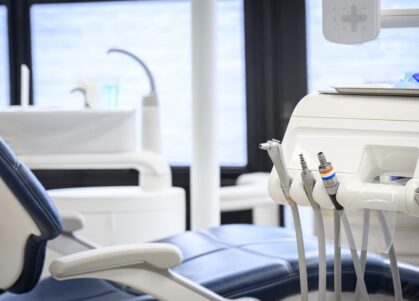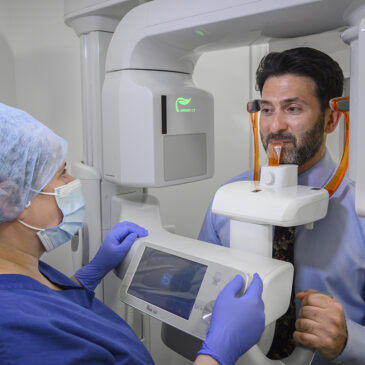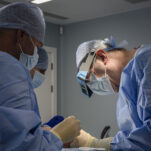Initial Treatment
Where surgical intervention is the answer, this is almost always day surgery at our in house facility and can be promptly arranged.
Most people have a general anaesthetic, which means you are asleep during surgery and will not remember anything. Whilst you are asleep, a local anaesthetic is used to numb the area, to prevent discomfort when you awake.
Your surgeon will expose the impacted tooth, by lifting up the gum and in a proportion of cases, remove part of the bone around the tooth.
Attaching a gold bracket and chain to the buried canine tooth can be helpful. This is used at a later stage of treatment by an orthodontist.
Another option is to apply a gauze, or pink paste healing dressing, or dressing plate. Creating a “window” in the gum, above the impacted canine.
The cover dressing may be stitched in place, which assists with healing and preserves access for your orthodontist. They can realign the tooth, which helps to ensure that the issue you had is unable to repeat itself.
Ongoing Solutions
Your treatment will normally be taken forward by an orthodontist and in the case of our Harley Street clinic, remains in house. A consultant maxillofacial surgeon and skilled orthodontist are resident.
Any issues from surgery should have passed, the soluble stitches be dissolved. If a gold bracket and chain were attached to the tooth and a stitch used to keep the chain out of the way, this is removed by your orthodontist.
The chain is there to attach to braces and can be used in different ways, depending on the stage of treatment. You need to allow several months for canine teeth to be correctly realigned but what can be achieved is remarkable.
There will always be unusual cases, which can be solved, including by transplanting the tooth to the right position. For most patients, initial treatment and an orthodontic solution will see their smile become normal.
If we can help with individual advice, or treatment on an impacted canine tooth, please get in touch with our team at any time.


